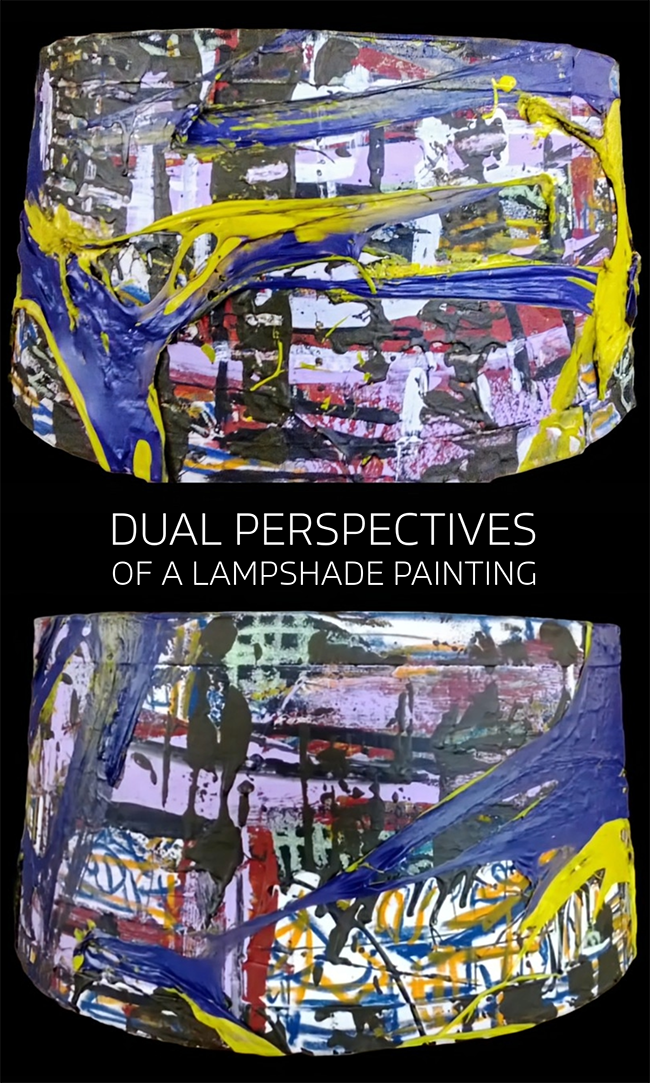Derrick Bullard began painting twenty-four years ago. He was a teenager with intense ADD and a need to focus that didn’t come easily in most parts of life. But painting was different. It stuck. Something about it made sense. And so he stayed with it—not for weeks, not for a semester, not until the next hobby came along. For decades.

What happens when someone spends that kind of time—alone, unplugged from the market, untouched by art school critique—simply painting? In Bullard’s case, it’s hundreds of works. Possibly over a thousand already, with a goal of more than 2,500 before he’s done.
This isn’t about chasing trends. Bullard’s practice isn’t shaped by what galleries want or what’s selling on Instagram. It’s about compulsion. A need to get something out. A personal rhythm that’s more about getting to the truth of what painting can be when it’s completely uncoupled from performance or validation.
Bullard’s work doesn’t sit neatly in any one category. He works with whatever he has on hand—acrylics, oil pastels, dried house paint. In one piece, he turned a lampshade into a canvas. That’s not just a quirky material choice. It’s part of how his mind moves. He sees potential where others might see limits. Texture matters. Surface matters. The object itself is part of the language.
The result? Pieces that feel alive. They don’t just hang on a wall. They pulse. They shift with light. Some are jagged. Some are smooth. All of them seem to hum with energy—sometimes raw, sometimes quiet, but always present.
Bullard’s ADD isn’t something he hides. It’s part of his story, and in some ways, part of his process. His paintings move fast, then slow. They twist, stop, start again. You can see decisions being made in real time across the canvas, and then rethought. But it’s not sloppy. It’s deliberate. Not polished, but deeply resolved.
There’s something refreshing about an artist who’s not trying to “break into the art world.” Bullard’s not emerging from a residency or dropping a debut show with carefully worded statements. He’s surfacing after years of private, relentless work—years of building a massive body of art that didn’t ask for permission.
And now? He’s ready to share it. Not because he needs to be seen, but because the work is ready to be seen.
This kind of art-making, this life in painting, is rare. We’re used to seeing artists perform their identity, tell the right story, position themselves. Bullard’s story is almost the opposite. It’s stripped down. Just a man and his studio. Over and over again. For years.
His approach to materials reflects that same instinct. He repurposes what he finds. He lets things dry longer than they’re supposed to. He doesn’t mind if the surface is rough or uneven. In fact, that’s part of the interest. You can tell he likes when a material resists him. When it pushes back a little. That friction is where his best work comes from.
The lampshade piece is a great example. On one level, it’s a bold, even funny move—who paints a lampshade? But look closer, and you see how it works. The shape curves light around the surface. The paint clings, stretches, even cracks. The energy isn’t just painted on. It’s sculpted by the shape itself. It becomes something you experience, not just look at.
There’s no pretension here. No slick talk. Just a deep commitment to painting. To showing up again and again. Some artists talk about process. Bullard is the process. And there’s something quietly radical about that—about making hundreds and hundreds of paintings just because you need to.
That doesn’t mean his work is disconnected from the world. On the contrary, it speaks to something a lot of people feel right now: the urge to make something real, to cut through distraction, to connect with materials in a hands-on way. Bullard’s art might have come from isolation, but it taps into a shared hunger for focus and depth.
In a culture that rewards short-term attention and polished appearances, Derrick Bullard’s work feels like an anchor. Messy. Honest. Built from the inside out.
He doesn’t paint to be noticed. But now that the work is out there, it’s hard to look away.

